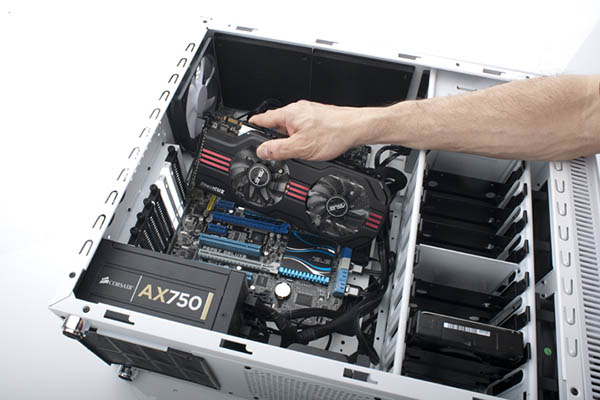 If you’re really into PC gaming then having a good video card will be one of the most essential parts of your kit. It is what often is the principal differentiator between just a generic PC and a gaming PC and is the one component that can really have the biggest, most obvious impact on your gaming experience. With that in mind, it’s worth remembering that not everybody knows all about video cards. Shopping for one can be a little more challenging than many other computer components as it doesn’t always seem straightforward to directly compare each option.
If you’re really into PC gaming then having a good video card will be one of the most essential parts of your kit. It is what often is the principal differentiator between just a generic PC and a gaming PC and is the one component that can really have the biggest, most obvious impact on your gaming experience. With that in mind, it’s worth remembering that not everybody knows all about video cards. Shopping for one can be a little more challenging than many other computer components as it doesn’t always seem straightforward to directly compare each option.
Budgeting for value
The first thing to consider is probably your budget. You could always spend more, and get better performance so I would recommend figuring out what your budget is and then you can look for the optimum level of power corresponding to that. The most powerful cards will usually be the most expensive but the good news is that most people will see great performance from mid-range cards and unless you’re looking for really hardcore performance, you don’t need to stress your budget all too much.
Keeping it in perspective
There are often a lot of factors for video cards which can make shopping seem confusing. Model numbers, proprietary technologies, various numbers of cores, stats and measurements and so on just seem to add to the confusion. While it can occasionally make a difference, pouring over the stats and minutiae often has diminishing returns and for most people it won’t really be worth the work. Don’t forget to look at the big picture instead of going down the rabbit hole of tech specs. It helps to get some perspective: at the end of the day you just need a card that works well and doesn’t cost too much. Sure a cooler running video card is nice but agonizing over fan configurations isn’t really going to give you a dramatic FPS boost in your next game session.
 Focus on the major factors
Focus on the major factors
Some of the stats are more important to pay attention to than others.
One of the more important ones is the amount of dedicated RAM your video card has. More is always better and it really tends to be worth springing for more whenever you can. This is one of those factors I would definitely recommend paying attention to. RAM type can make a difference too. DDR3 is the old standard and newer types like GDDR5 are improvements. You generally want better, faster RAM whenever possible, but having more is usually a higher priority. This top of the line Zotac GeForce GTX 980 Ti Amp Extreme has 6GB of GDDR5 for example.
When it comes to GPU types and proprietary technologies it mostly just depends on what you’re looking to do. There are many online guides and benchmarks that can help you shop. Frankly I never felt it made a tremendous difference which platform you go with, so long as you get a decently powerful card. Its not that big a choice anymore now that Nvidia tech now has such a dominant marketshare over Radeon. A mid-range card like this Zotac GeForce GTX 960 will give you mid-range performance. A top-level card like the Zotac GeForce GTX 980 will give you top-level performance. Unless you’re super interested in a particular technology like G-Sync for example, you don’t really need to worry too much beyond compatibility. Your games will generally work just fine, just make sure you get as beefy a GPU as you can afford with as much fast RAM as possible within your budget. Once you learn to prioritize GPU and RAM over all those other smaller factors, shopping for a video card suddenly gets a lot easier.



